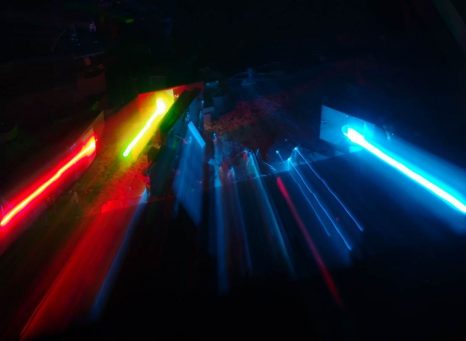
© Copyright Inserm/Decrouy, Xavier
Numerous light-related technological innovations were presented at the Onlylight trade fair, which took place in Lyon from June 13 to 15. This year a number of public health issues were discussed, including “illuminating for health”, how to implement “good light habits”, and how to “illuminate for learning without risking myopia”.
Claude Gronfier, an Inserm chronobiologist who participated in the exhibition, carries out research into light as a regulator of biological rhythms. He emphasized the need to control “poor light exposure habits”, like the light generated by screens, in particular, and that can upset the biological clock.
Read the press release “Dimly lit working environments : correcting your body clock is possible!”
Another topic discussed during the exhibition was “illuminating for learning”. At a time when the number of nearsighted people aged 12 to 54 is doubling in Europe, and tripling among young people in some Asian countries, Vincent Daien, an Inserm researcher (Inserm Unit 1061) and ophthalmologist at the University Hospital of Montpellier, is investigating the risk factors associated with myopia. Beyond the genetic factors associated with myopia, the environment—more precisely, prolonged exposure to natural light—may also play a role. It is thought to activate the retina’s production of dopamine, a neurotransmitter that controls eye growth.
Read the article [in French] “Myopia: how to stop the epidemic ” published in Science&Santé no. 25.
Finally, as part of the “healing with light” topic, optogenetics, which first emerged in the 2000s, appears to be a promising method for restoring vision in patients with retinal degeneration. This technique consists of inserting a gene into the neurons to make them more sensitive to light.
Eric Burguière, an Inserm researcher (Inserm Unit 1127, Brain and Spinal Cord Institute), also uses this technique for treating OCD.
See [in French]: “Optogenetics, from algae to the retina“.
Also read the press release “Optogenetics is proving to be highly promising in the treatment of OCD“.
These contents could be interesting :
